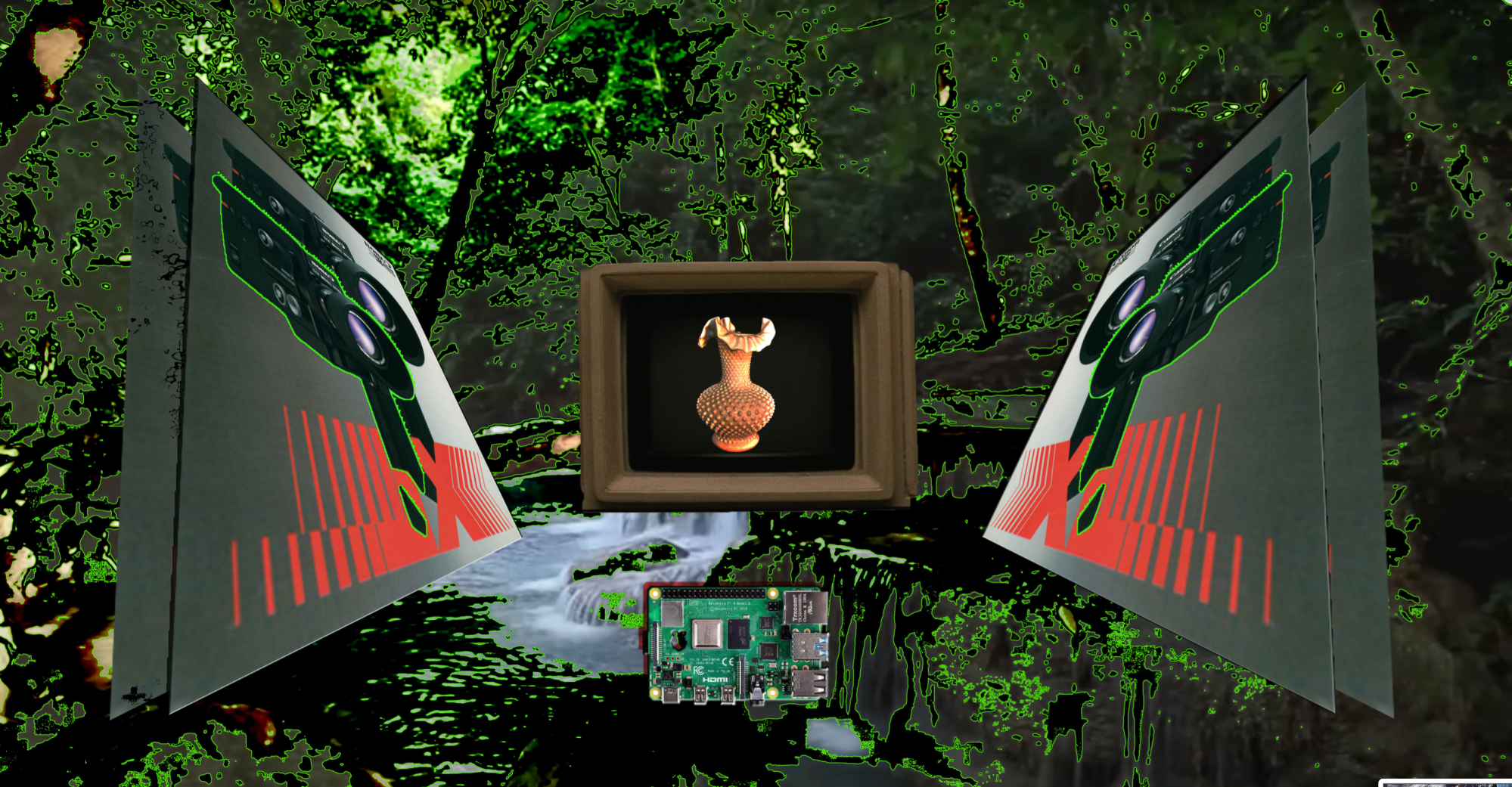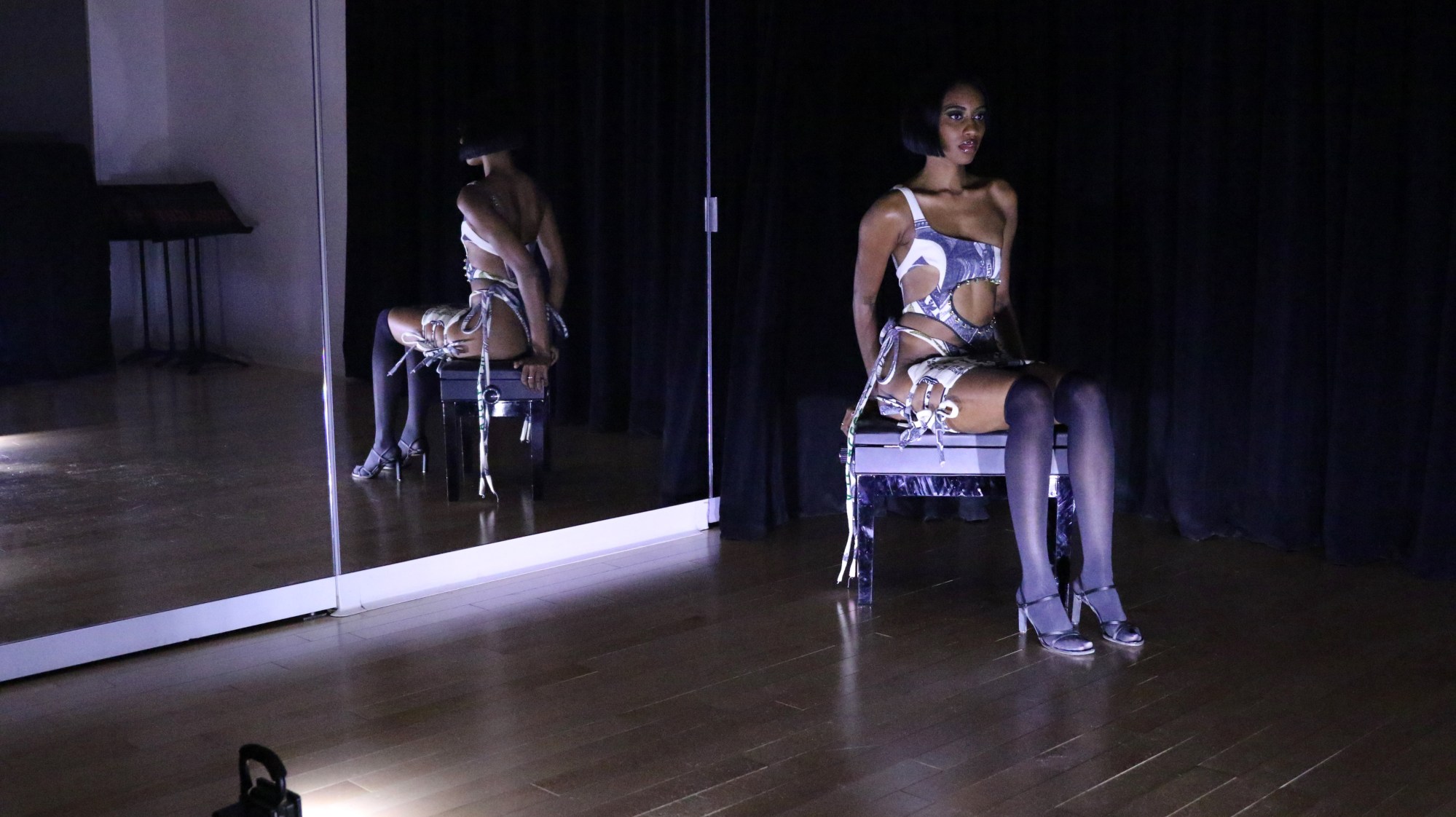If you’re reading this, chances are that you spent a good portion of last week with your eyes glued to Ouverture of Something that Never Ended, the Gus van Sant and Alessandro Michele co-directed cinematic masterpiece that brought Gucci’s alike-titled collection to the world. Indeed, for many, the main reason for tuning in night after night was to see protagonist Silvia Calderoni going about her day in Rome, and the eclectic, Gucci-clad ensemble cast whose paths she crosses along the way — Harry Styles, Billie Eilish, Jeremy O. Harris and Paul B. Preciado, to name a few. One of the things that kept us coming back wasn’t just the main event; it was also the programme of 15 short films celebrating the work of some of brightest independent designers working today.
Fresh faces like Gui Rosa and Charles de Vilmorin appeared alongside more familiar names like Ahluwalia, Mowalola and Stefan Cooke — with each designer given the opportunity to create a short flick and capsule collection that offered fresh, dynamic insight into their burgeoning worlds. Though the festival’s official dates may have passed, you can still stream each of the 15 shorts on Gucci’s YouTube channel.
To get you started, we asked four of the designers behind some of our GucciFest highlights to share the inspirations and intentions behind their films.
Ahluwalia
“Joy is a short film that is about the Black experience, focusing on strength, vulnerability, family and love. It’s full of wonderful characters that each have a very different story, and it shows that Afro-Caribbean culture is diverse and multifaceted. I’d never done a film before, and Samona Olanipekun, the film’s director, was a brilliant teacher through the whole process.
I was in awe of the amazing cast we worked with. We had community leaders, activists, athletes and a myriad of other people involved and I felt it was so, so important to capture each one of them in a way that would let them shine and show them in the best way possible.
I think the film expands on my desire to support communities (as I previously did in Jalebi and Sweet Lassi), but it is in a totally new way. It’s a really emotional and personal project, and I designed all the clothes with the cast in mind, rather than a fashion show or stockists. It’s a new, very collaborative approach to clothing design for me.”
“The Pedestrian was inspired by the ‘game – (the dogs)’ scene in Spike Lee’s She’s Gotta Have It. We wanted to try and recreate the wit and tone of that through a fashion lens, asking the models about their relationships — things like: ‘What’s your favourite pick-up line?’, ‘If you have a partner, how did you meet them?’ and ‘What’s your ideal date?’ — and capturing their reactions. It was about seeing how people tick; how five men can respond to the same questions in such different ways. Not just in what they say, but how they stand, their body language, facial expression…how they wear the clothes. It’s sort of flipping the concept of my SS21 film The Ideal Man, which also played with the idea of characters and male stereotypes, but there’s a real warmth and humanity to the tone of the film that I love.
At its core, it’s an examination of masculinity and traditional ideas of dating and sexual politics. I wanted to hold a mirror up to those stereotypes from a classic movie and see how that contrasts with real men today. That’s why casting is so important to me. I wanted to choose a cast that was diverse but that also really encapsulates who the Bianca Saunders man is. My casting is always a mixture of open casting and models, and to get the balance right I wanted all of the characters to stand out, so the casting was very fun and playful. I’ve been working with Najia Saad for the past couple of seasons, and she understands that I don’t want ‘regular’ casting. We always get the models to do something a bit out of the ordinary. Like for AW20, for example, when we got the models to dance. The film features rising model Bobby Brazier, he is such a character and super confident. Then I really wanted to feature an older guy… and also Jermaine and Marvin who have modelled for me before, and Jacob who was in my AW20 presentation.”
“My work is very personal so I’ll provide a bit of background first. I’m a first gen NYC native (born and raised in the Bronx) with Caribbean lineage. My father is from Jamaica, my mother is from St. Croix, and my Grandma is from St. Lucia. My grandma is the framed older woman at the centre of the film and the person that passed her sewing abilities down to me. Her feature was intended to immortalise her in my work. With that said, this film is a visual collage of aspects of my life in regards to my ancestry, my traumas, my culture, nature, studying time, spiritually, value, and the art manifestations of these experiences. The middle section and energy of the film was inspired by a five-minute collage exercise that I developed with my art therapist.
The composition of the image above informed the film layout: you’re meant to focus on the centred image while surrounding imagery, movement and sound is at play to lock you into a meditation and trance. The overall flow of the film was designed so you are brought in from scenes you think you understand, like the first scene where I’m sitting on a boat making repetitive movements. This visual and scenes like it are meant to represent my consciousness. You flow into the centre scene with trippy random graphics that are supposed to represent the subconscious featuring the random images that float around my head and dreams of myself as a fully mature free woman (my higher self). After the centre scene, you’re brought back out to energy similar to the first half of the movie: nature, dance, and the two models, Jade-Renee Bland and Asiah James, that are meant to represent Black sisters. Then the film ends on an island in the middle of the bayou in the same outfit featured in the opening scene. The film was designed to mirror itself which is a recurring theme in my work.

My work is also a critique of how we value and engage African American contributions to the American fashion world. I was told at my senior BFA fashion critique that, although I was talented, I would have a hard time making it because of my skin colour. I’m stubborn, so I ignored the comment, but was brought back to it over and over again in real time, which fucking sucked, to put it lightly. This industry deepened my understanding of what financial and artistic trauma was because I have a story to tell, work to create, and spaces to create for artists like myself. But the industry’s internal projection of who is historically associated with wealth, art, and good taste won’t stop getting in the way. I specifically made the money looks featured throughout the film because I wanted to cut up oversized $100 bills as a form of therapy. I wanted to create visuals of Black American femmes wrapped in money so the viewer can confront their feelings on who deserves to be associated with luxury.
I want the art and fashion worlds to confront their biases on who is and who isn’t meant to be included in conversations regarding luxury. I want the viewer to address what they expect bodies to look like in this industry and confront their resistance to new shapes and sizes, if they have any. I never want to be seen as someone that just creates clothes using traditional methods alongside industry schedules. I want to communicate that I am free to make what I want, when I want. All my creations, whether it be art, photo, film, garments, or dance, are manifestations of deeply personal experiences. I don’t want to create just a fashion brand, but an entire universe that I can escape to. In the future, I’ll be designing films and music videos telling Black stories with a curated team that visualises what characters wear to the spaces they enter. In the future, I want to create a multi-disciplinary need-based art residency for Black creatives and this film is an energetic calling card to the people that can help bring these ideas into existence.”
Boramy Viguier
“The process of working on this film has been similar to the process of working on my clothing. When I design collections, I almost always have in mind that I am a costume designer for a movie. I think about looks as if they were for characters in a film — whether this or that character would be the hero or the bad guy. For this specific collaboration with Gucci, I finally had the chance to create these costumes.
I thought of the film before the garments, looking at all the references that I love in the language of cinema: heroic fantasy, knights, sorcerers, witches, surrealism, James Bond opening sequences… I didn’t really mind whether or not these references matched well together at first — the idea was to make it work, to find links between them. My work is neither political nor activist. It is not propaganda of any kind, It is a purely stylistic affair. The purpose to open the viewer’s imagination, and mine too.
As such, the idea was precisely not to communicate anything in particular. There is no message in my work. Nothing that I want people to feel right or wrong about. I was imagining looks and outfits for a mystical adventurer, on an imaginary quest for a better mindset in a magical and incoherent world. I guess the film’s main message would be that creative outcomes shouldn’t reflect reality. Rather, they should really give more to it, emphasise it, exaggerate it.”





